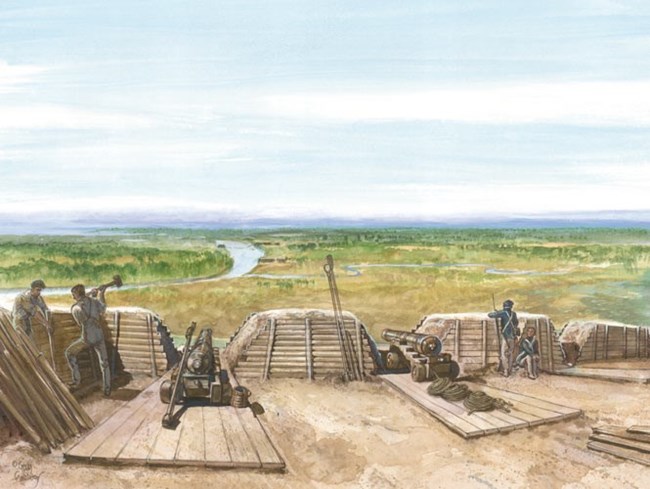
The British returned to the Upper Bay at the end of April 1813, this time focused on the local tidewater communities. Led by Rear Adm. George Cockburn, a naval squadron with Royal Marines attacked several towns on the upper shore. FrenchtownIn the predawn hours of April 29, 1813, Rear Admiral Cockburn made his first assault at Frenchtown, which was located at a strategic boat landing and along a stagecoach line to Philadelphia. Royal Marines drove off a handful of American militiamen, destroyed the few cannon mounted on Frenchtown’s small gun battery and burned $30,000 worth of supplies.ElktonElkton residents constructed three earthen forts and stretched a chain across the Elk River to protect their town. As the British moved north from Frenchtown on April 29, 1813, forts Frederick and Defiance opened fire on Cockburn’s barges, forcing his troops back to the safety of their ships on the Bay.Havre de GraceHavre de Grace was home of the celebrated Com. John Rogers, who fired the first naval shots of the War of 1812 and commanded the American frigate President.On May 3, 1813, with Congreve rockets firing from British vessels, Royal Marines landed and overran an earthen gun battery on the Havre de Grace waterfront. The militiamen posted at the fort retreated into the town, firing from the cover of buildings, walls, and trees. One man, John O’Neill, remained at the battery and singlehandedly loaded and fired a cannon at the approaching British troops. He was later captured in town while trying to rally his fellow militiamen to return to the battery and defend it. The British troops then pillaged and burned Havre de Grace, destroying nearly three-quarters of the town. Fredericktown and GeorgetownFredericktown and Georgetown were next to experience Cockburn’s wrath. On May 6, 1813, forts Duffy and Pearce Point—which sat on opposite sides of the Sassafras River—opened fire on the British barges. Royal Marines landed and drove off the American defenders. With the river clear, the British continued to Fredericktown and set it ablaze.The British then crossed the river and continued their destruction at Georgetown. A local legend claims that Georgetown resident Catharine Knight convinced Cockburn to spare the home of her next-door neighbor, an elderly woman. In doing so, Knight also saved her house. CharlestownAfter seeing the destruction of their neighboring communities, the people of Charlestown wanted to ensure their own safety. The town officials pledged that “neither guns nor militia men shall be suffered there” or “warlike stores” kept in town. In exchange, Rear Admiral Cockburn guaranteed that the community would not be harmed. Charlestown was the only town in Maryland to officially surrender to the enemy. |
Last updated: April 29, 2020
